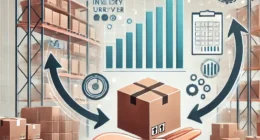Robotic Process Automation (RPA) is transforming industries. By automating routine tasks, it helps companies save time and money. However, RPA alone has its limits. It handles repetitive processes but lacks decision-making capabilities. To overcome this, companies are combining RPA with Artificial Intelligence (AI). Together, they create a powerful operational brain. This brain can analyze data, make decisions, and continuously improve operations. The blend of these technologies offers businesses unprecedented efficiency.
Table of Contents
Understanding RPA
RPA automates repetitive and rule-based tasks. These tasks usually take up a lot of time when done manually. RPA mimics human actions, such as data entry or form filling. It works fast and accurately. This reduces human error and improves overall productivity. However, while RPA can perform simple actions, it does not think or adapt. This is where AI comes in.
What AI Brings to the Table
AI, unlike RPA, can learn and make decisions. It processes large amounts of data to find patterns and insights. AI has the power to understand natural language, images, and even emotions. By integrating AI with RPA, businesses can take automation to the next level. AI adds cognitive abilities to RPA, enabling more intelligent automation.
Combining RPA and AI
When combined, RPA and AI create what is often called an “operational brain.” This operational brain does more than just follow rules. It analyzes data in real-time, makes decisions, and takes actions based on that data. For example, an RPA bot can process invoices. With AI, the bot can also identify anomalies, predict future costs, and suggest improvements. This allows businesses to automate complex processes and continuously improve them.
Key Benefits of the RPA-AI Combination
- Enhanced Decision-Making
Traditional RPA follows strict rules. If something unexpected happens, the process halts. AI changes this. It allows bots to handle exceptions and adapt to new situations. For example, a customer service bot using AI can analyze customer sentiment and respond appropriately, whereas RPA alone would stick to scripted responses. - Cost Reduction
By automating more complex processes, companies can reduce their operational costs significantly. Fewer resources are needed for manual tasks, and AI helps ensure processes run efficiently. This reduces the need for constant human oversight. - Improved Efficiency
RPA combined with AI can optimize processes over time. AI learns from data and feedback. It identifies bottlenecks and suggests improvements. This results in faster, smoother workflows, leading to higher productivity. - Scalability
Businesses can scale operations more easily with an RPA-AI system. The system can handle larger volumes of work without the need for proportional increases in manpower. AI ensures that processes remain efficient even as they grow. - Data-Driven Insights
The combination of RPA and AI allows businesses to analyze vast amounts of data in real time. AI helps make sense of this data by identifying patterns and trends. Businesses can use these insights to make more informed decisions and stay competitive.
Real-World Applications
Many industries are already benefiting from combining RPA and AI. Below are a few examples:
- Healthcare
Hospitals are using RPA and AI to streamline patient records management. RPA automates data entry, while AI helps identify patients at risk and suggests treatment plans based on their history. This speeds up administrative processes and improves patient care. - Finance
In the finance sector, RPA automates routine tasks such as transaction processing. AI enhances this by analyzing financial trends and providing predictions. This allows financial institutions to detect fraud, reduce risks, and offer personalized services to clients. - Supply Chain Management
RPA and AI optimize supply chain operations by automating order processing and inventory management. AI predicts future demand, allowing businesses to adjust their stock levels accordingly. This prevents overstocking or understocking and improves overall efficiency. - Customer Service
Companies are using AI-powered chatbots in combination with RPA to handle customer inquiries. AI analyzes customer intent, while RPA retrieves the necessary information to resolve issues. This creates a seamless experience for the customer and reduces response times.
Challenges to Overcome
Despite the many benefits, there are still challenges when integrating RPA and AI. First, implementing these technologies requires a well-thought-out strategy. Businesses must identify which processes to automate and ensure they have the right data for AI to learn from. Another challenge is maintaining the system. Both RPA and AI require regular updates and monitoring to perform optimally. Lastly, organizations must ensure they have the skilled workforce needed to manage and optimize the system.
Future of RPA and AI
The future of automation looks promising. As AI continues to advance, its capabilities will enhance RPA even further. Businesses will be able to automate more complex tasks and make smarter decisions. In the future, we may see fully autonomous systems running entire operations with minimal human intervention. This could lead to higher levels of efficiency and innovation in industries across the board.
Conclusion
Combining RPA with AI unlocks new potential for businesses. It creates an operational brain that can think, learn, and improve. This powerful combination not only automates routine tasks but also enhances decision-making, reduces costs, and increases efficiency. As industries continue to adopt this technology, we can expect to see significant improvements in how businesses operate. The future is bright for companies that embrace RPA and AI together. The operational brain is no longer a distant concept—it’s becoming a reality today.









